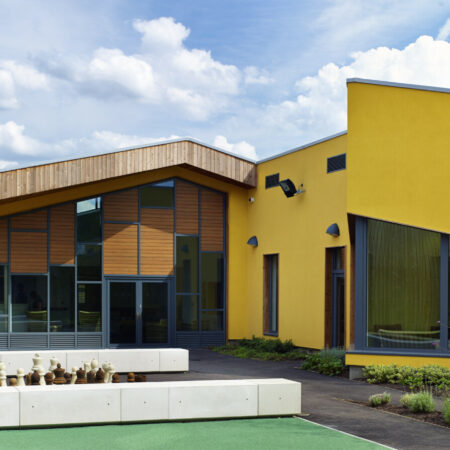Are MMC and Imaginative Building Design Compatible?
Offsite has been heralded as the future of construction for so long – it’s high time that future arrived. Perhaps what’s missing is the understanding that it isn’t just the delivery process, but also design methods, that need to adapt.
There has been dramatic progress with deploying MMC and offsite in education construction – largely driven by enlightened procurement and strict output specifications. But other areas such as housing have been slow to change.
One reason for this could be that building design hasn’t evolved to take full advantage of the opportunity. This could be based on concerns that MMC imposes rigidity and constrains design freedom. Are these concerns borne out by experience?
Modern education procurement starts with an assumption about the methods and materials that will be deployed. It assumes that design will be highly influenced by these choices and by standardised components and features. Yet when you look at completed projects they don’t seem to lack flair and imagination.
In fact, specifying MMC brings its own advantages in terms of simplifying the specification and design process.
Methods and Materials are Critical Drivers
In the world of MMC, methods and materials influence design – but wasn’t that always the case to some extent? Embracing this opportunity to achieve greater simplification is arguably the critical change needed to make a wholesale shift to MMC and offsite a reality: building design should be driven more fundamentally by methods and materials across the board.
This may not be a comfortable shift for large parts of a construction sector steeped in tradition. But it’s a principle Osborne has applied on many projects over several years.
We were early adopters of MMC and have our own self-delivery panelised offsite capability. It became obvious early on that delivering projects using offsite methods had many critical differences. We realised that designing specifically for offsite methods and materials was the way to get the most value from the technology.
Feeling the Benefit
For many projects across the sector, decisions about how to build are still put off until later phases of the construction. As a result, these projects don’t make full use of the offsite opportunity.
In short, the advantages include developing highly adaptable structures from standardised building components, leading to economies of scale and greater certainty over costs, timings and performance.
The shift in thinking represents the difference between process improvement and innovation. Introducing elements of MMC as process improvements into a traditional construction model will only deliver marginal gains.
To achieve transformative change, you have to innovate the entire process. Imaginative design is still possible without affecting the added value MMC can bring. It starts by ensuring that designers understand the technology and work in partnership with developers who have offsite product and delivery expertise.
If you would like to ask us any questions about our approach to design, development or project delivery, contact Caroline Compton-James ([email protected]) or visit our resource centre.

